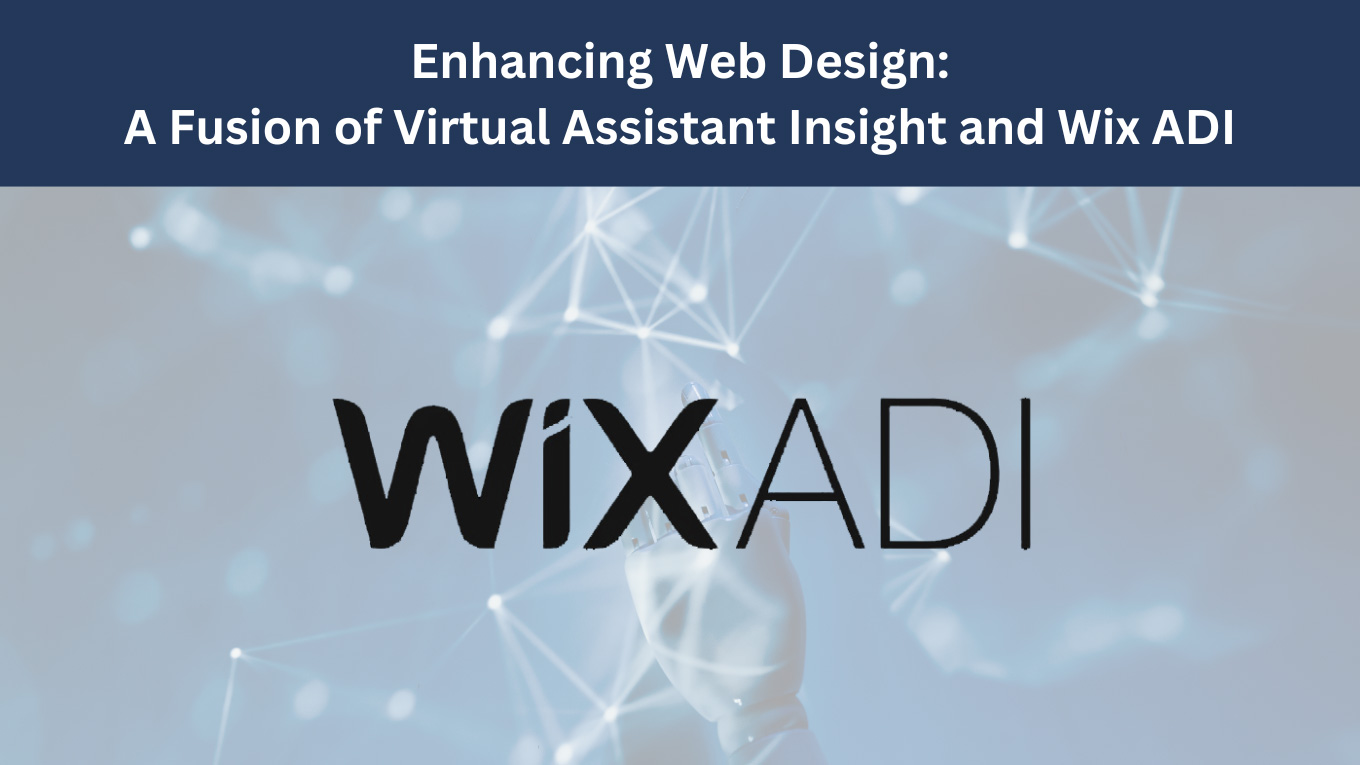In today’s digital environment, websites act as virtual storefronts for businesses and individuals. Creating beautiful and functional websites is an art form that requires a keen eye for design and a depth of experience with the user experience. Enter virtual assistants, AI-powered partners, and Wix ADI, a revolutionary tool from popular website builder Wix. Together they deliver a powerful creative and automated workflow that revolutionizes the web design process. In this article, we will explore the relationship between the virtual assistant and the web designer mindset and valuable lessons from Wix ADI.
1. Role of Virtual Assistant in Web Design:
Virtual assistants have evolved beyond basic tasks, becoming cross-functional partners. They offer several benefits in web design:
Efficiency: Virtual assistants simplify tasks such as content updates, graphics optimization, and plugin management, freeing up developers to focus creatively.
Content management: Can help organize and categorize content, ensuring a seamless user experience.
Implementation of advanced communication: Virtual assistants can add chatbots and other communication features for real-time interaction with website visitors.
2. Wix ADI: Changes Changing Web Design:
Tools like Wix ADI (Artificial Design Intelligence) are game-changers in the world of web design. It uses AI algorithms to analyze the user’s wants and needs and automatically deliver a customized website design. Here’s how to take advantage of a Virtual Assistant and web designer:
Time savings: Wix ADI accelerates the early stages of programming, allowing designers to focus on productivity and efficiency.
User oriented thinking: The ability to create a tool to understand the needs of the user helps in creating websites that match the target audience.
Responsive design: Wix ADI ensures that the design is responsive across devices, saving the developer from manual modifications.
Consistency: The tool ensures consistency throughout the website, enhancing the overall user experience.
3. Lessons from the merger:
Personalization issues: Both the Virtual Assistant and Wix ADI emphasize the importance of personalization. When websites are designed to reflect a brand’s uniqueness and audience aspirations, it drives better engagement.
Collaboration is key: While Wix ADI automates product development, the human touch still matters. Collaborative efforts between virtual assistants and designers ensure a harmonious balance between automation and creativity.
Optimize and learn: Wix ADI’s algorithms continuously learn from user interactions to refine design recommendations. Similarly, virtual assistants learn from the questions they use in order to improve responses and tasks.
User-Centric Approach: Both the Virtual Assistant and Wix ADI put user needs first. This shared mindset creates ideas that not only look good but also provide a seamless and user-friendly experience.
Tools like Virtual Assistants and the Wix ADI collaboration are shaping the future of web design. This collaboration combines effective automation with a human approach to creativity. As we continue to harness the power of AI and design tools, the web design landscape is evolving, empowering businesses and individuals to create engaging online experiences that leave a lasting impression.


